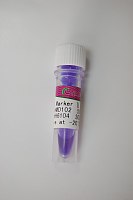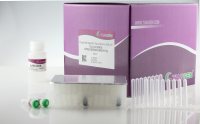Multipllex DNA Sequencing
互联网
650
Various approaches have been proposed to speed up the process of DNA sequencing in order to facilitate sequencing of large genomes from bacteria (~4 Mbp), yeast (~13 Mbp), human (~3000 Mbp), and other organisms (1 -3 ). The multiplex DNA sequencing strategy (4 ) presents one of these approaches. It is compatible with the chemical (5 ) and the enzymatic (6 ) sequencing chemistry and allows simple scale-up without just multiplying cost and effort. Its principle consists in pooling or multiplexing “n” samples as early as possible in the sequencing process, and in de-pooling or de-multiplexing these samples as late as possible. In between these steps, the samples are processed as pools and, after transfer to a membrane, “n” sequence images can be obtained from the same membrane by sequential hybridizations with specific ta#g-oligonucleotides. Figure. 1 shows this principle and illustrates the difference between the standard and multiplex DNA sequencing strategy. The multiplex approach requires extra work for the sequencing library and two additional steps (transfer and hybridization/wash). However, the amount of work is considerably reduced for the steps of clone growth, template preparation, sequencing reactions, and electrophoresis. Since the first description in 1988 (4 ) several alternative multiplex concepts and/or vector systems have been developed or proposed (7-11 ). This chapter will outline a protocol for enzymatic multiplex DNA sequencing using double stranded template DNA.


Fig. 1. Schematic diagram of the standard and multiplex DNA sequencing procedure. Each step is represented by an arrow Interrupted arrows indicate steps that do not apply to this particular method






